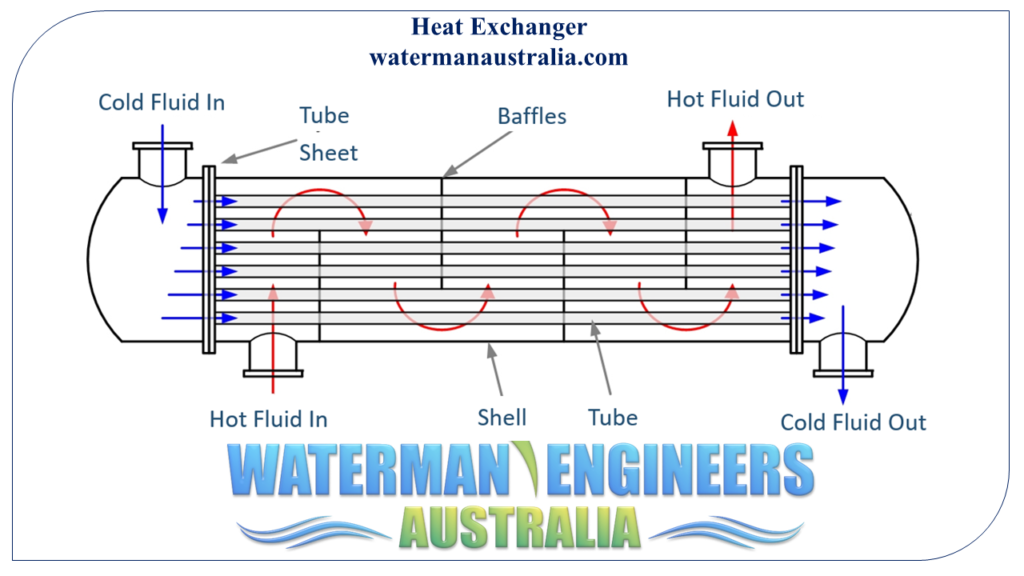
A heat exchanger is a device that allows for the transmission of heat between two different media without any physical contact between them. Heat exchangers work on the idea that thermal energy can be transferred from a hot fluid to a cold fluid. Heat exchangers provide for precise temperature regulation, improving energy efficiency and system functionality by transferring heat between two fluids.
Power plants, chemical plants, HVAC (heating, ventilation, and air conditioning) systems, supermarkets, and many more all employ heat exchangers. They can be found in commonplace home products like air conditioners and water heaters.
In this article, we'll learn about heat exchangers, what they are, how they work, and the different kinds there are. The article also details the common uses and factors to consider when choosing a heat exchanger.
eleven. Tubesheets. Tubesheets under a hundred mm thick are typically made from plate substance. Thicker tubesheets, or for high integrity provider, are made from forged discs. Clad plate is often applied exactly where significant alloy material is required for approach explanations. A clad tubesheet includes a carbon or lower alloy backing plate of enough thickness to fulfill the pressure vessel style code, by using a layer of the upper alloy content bonded onto it by welding or by explosion cladding. TEMA gives design guidelines to calculate the tubesheet thickness, which give comparable although not equivalent final results to The principles in ASME and BS5500. In addition, it specifies tolerances for tube hole diameter, ligament width and for drill drift.
A fluid with tendency to foul also needs to be set over the tube facet, that's simpler to thoroughly clean: Cleansing the inside of (straight) tubes is simpler than cleansing the shell/beyond the tubes
Fluids with vapor phase ought to be to the shell aspect due to the fact it provides larger quantity to accommodate its reduce heat transfer coefficient.
and knowledge with us and a lot of others. Your reviews are usually welcome, just submit them during the section down below.
To fulfill the suitable polices (see Force Vessels) the pressurized components of alternative types of exchangers must satisfy at the least the ideas of the pertinent tension vessel design code.
Differing kinds of defrost mechanisms with sensors within the unit can be found to regulate the defrost system. Admirers shift air to provide the necessary airflow and ventilation charge.
In summary, heat exchangers play an important part in the refrigerator’s effectiveness, holding your food items interesting and new. By knowledge the different sorts of heat exchangers as well as their capabilities, in addition to right maintenance and troubleshooting, you can be certain your fridge proceeds to operate successfully and reliably For several years to return.
Counter-move heat exchangers encompass a Main of flat plates. Air enters either conclusion of your exchanger. Heat transfers with the plates for the cooler air. The for a longer period the air operates in the unit, the higher the heat Trade.
Evaporative condensers use a mix of drinking water and air to chill the refrigerant and launch heat. They’re remarkably productive, specifically in hot and dry climates, but involve a lot more maintenance and will take in an important level of h2o.
Contains geometrical calculations for that tube and shell facet, also covering boiling and condensation heat transfer
Extreme stress fall can result in minimized performance and perhaps component failure. Causes can incorporate blocked Designing of heat exchanger manufacturer or ruined heat exchanger elements. Periodic inspections and prompt repairs might help keep away from these difficulties.
The authors want to respect Dr. Andrew H. Pike for offering take a look at information on many plate heat exchangers (open up access) beneficial from the existing study. The authors would like to thank the reviewers for his or her important feedback/tips to Enhance the clarity of presentation.
Once the effects element exceeds the TEMA restrictions, impingement protection is needed. The TEMA benchmarks specify distinct rho-v-two limits for erosive fluids and nonerosive fluids.
The first part of this segment is prevalent to all types, followed by sections which might be unique to each sort of heat exchanger.